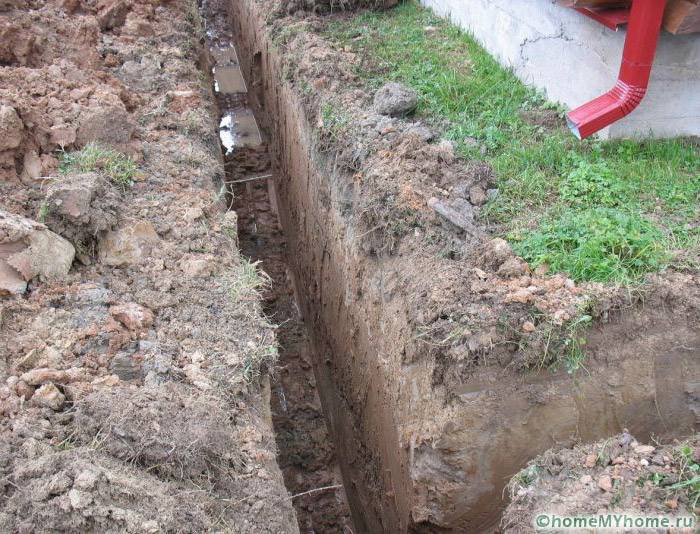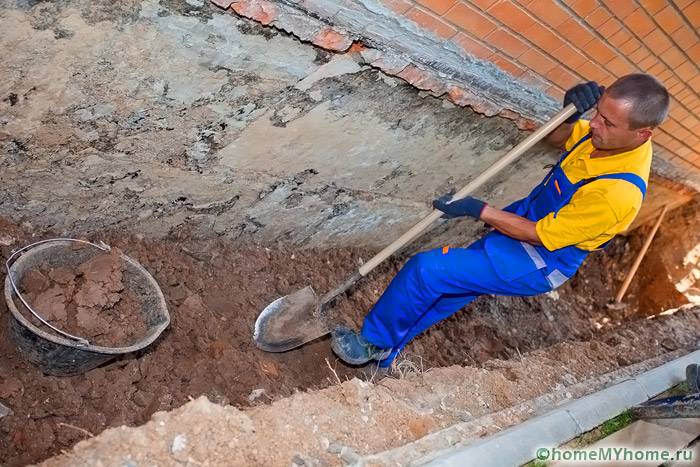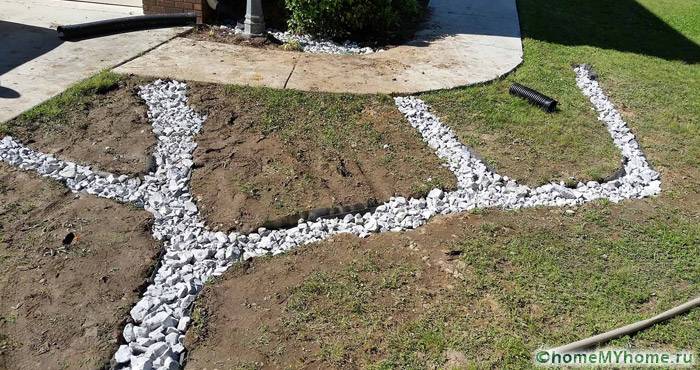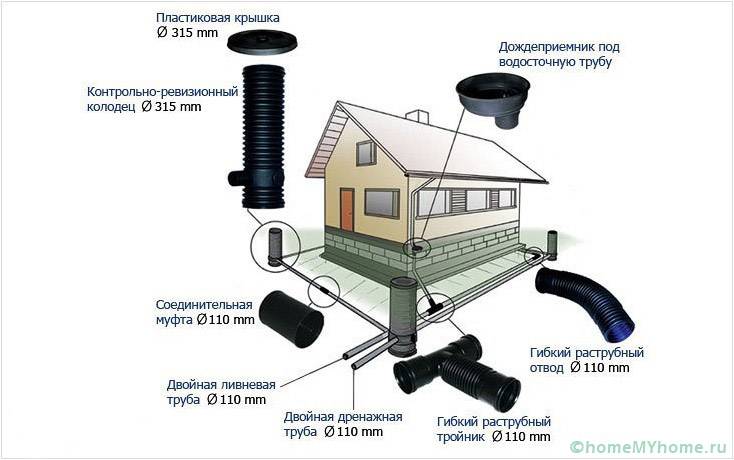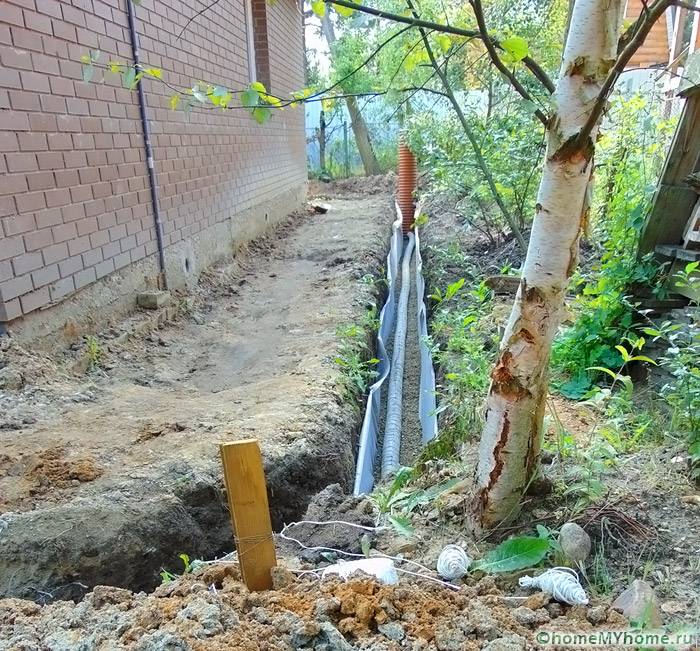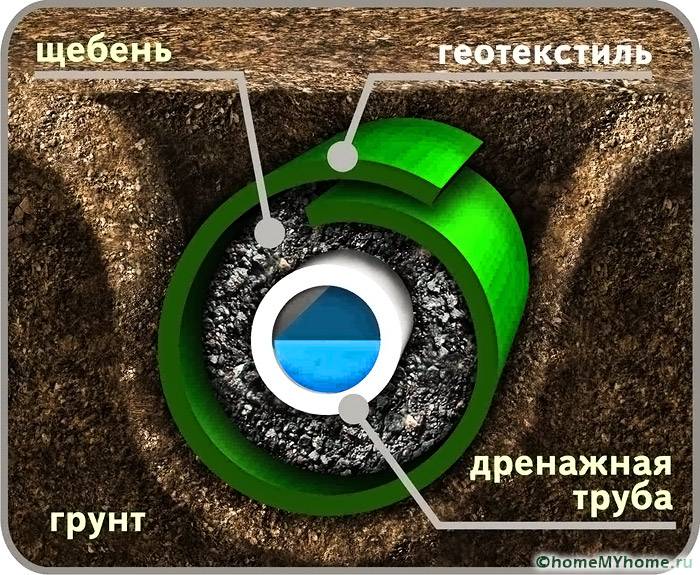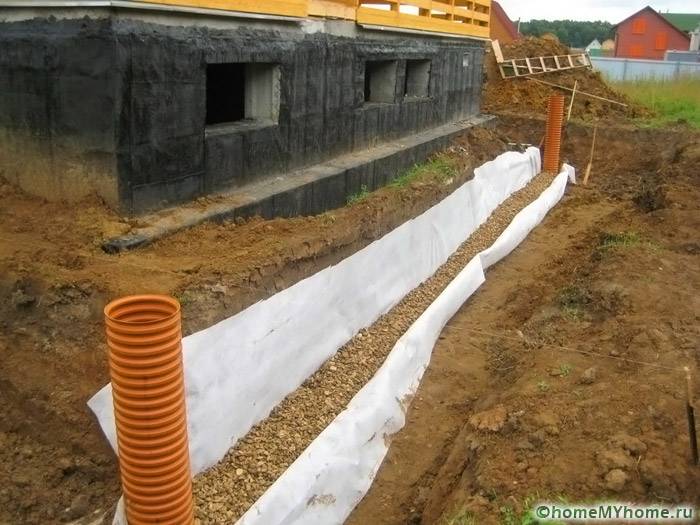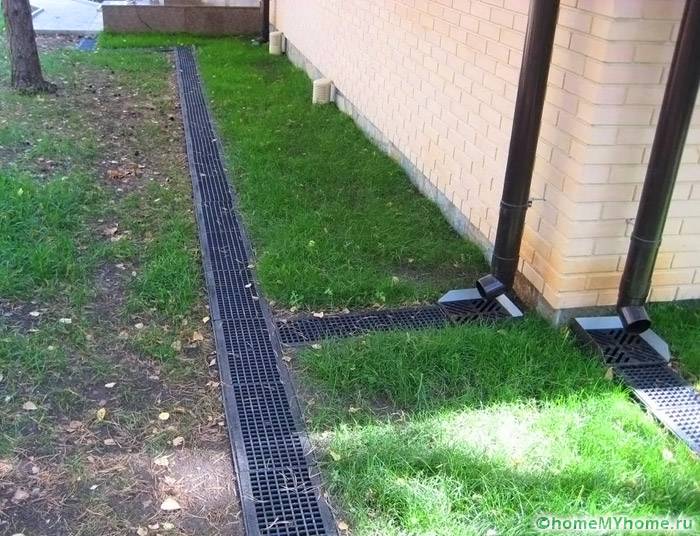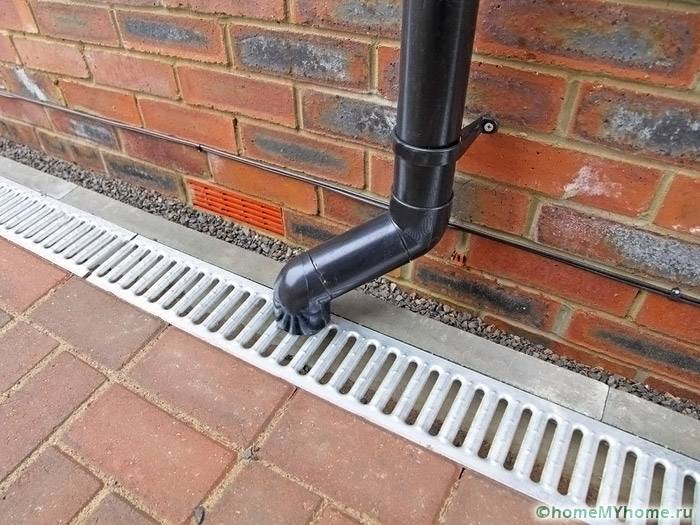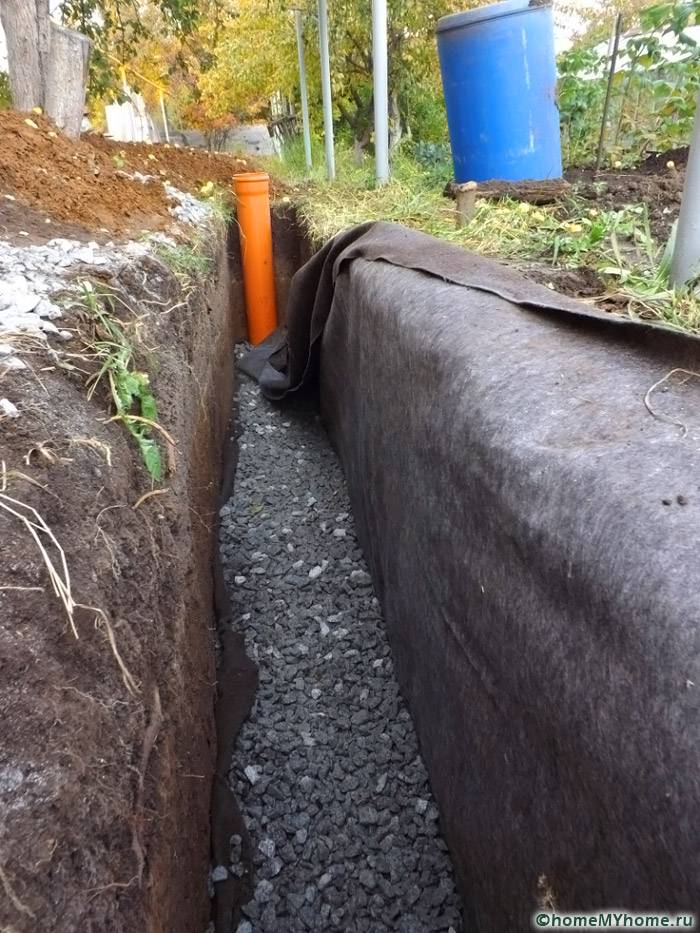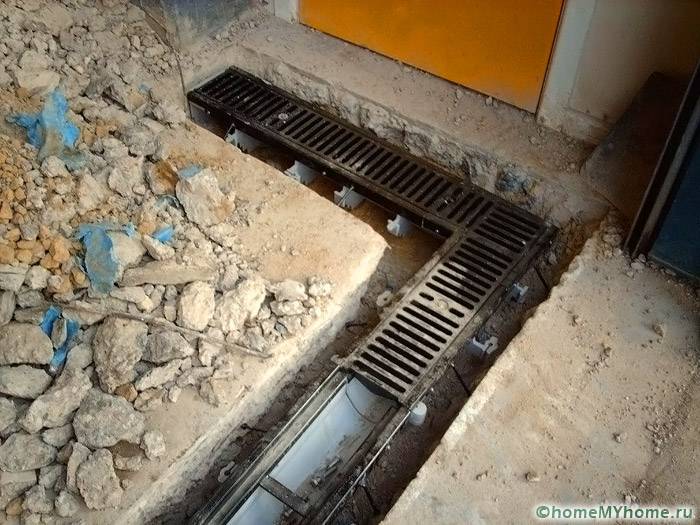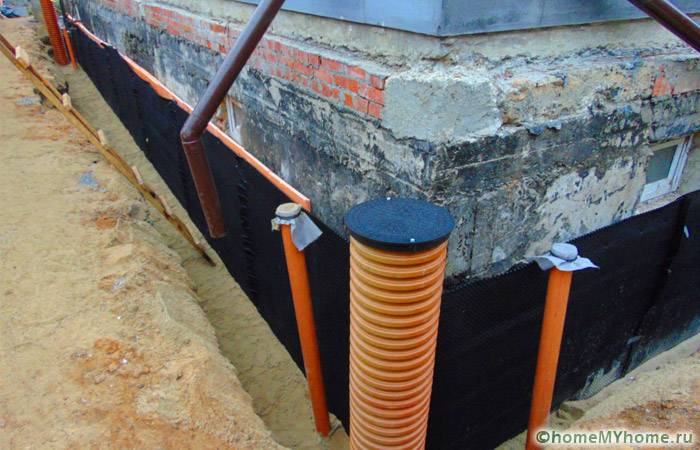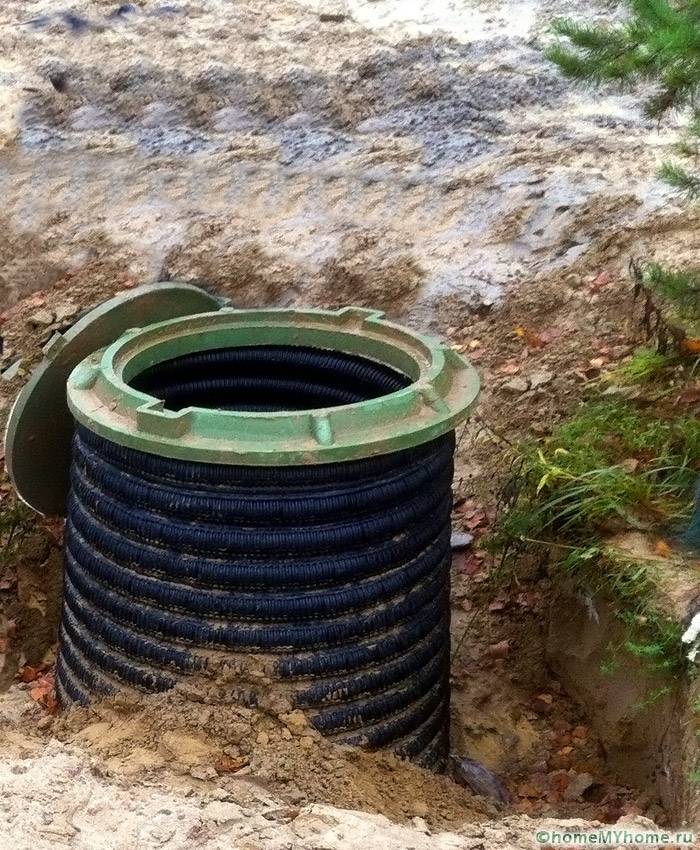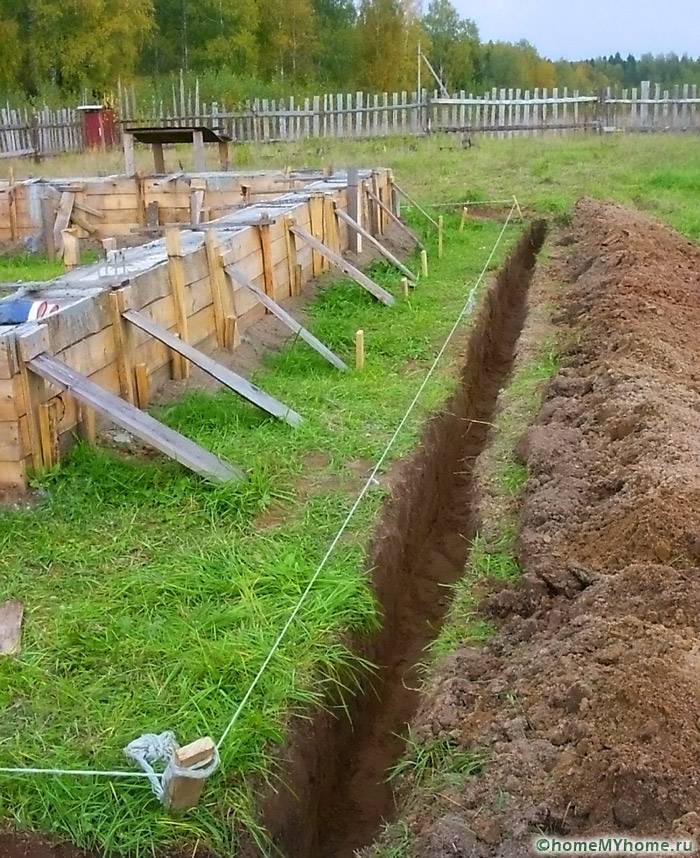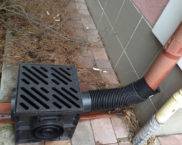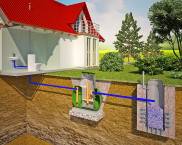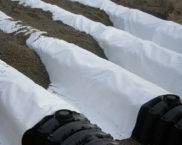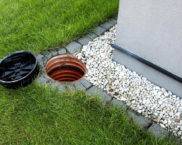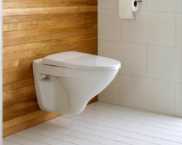Drainage system around the house: a drainage device to drain the soil around the perimeter
If the site is located in an area of frequent accumulation of moisture, then a drainage system around the house is mandatory. The drainage device will drain the soil around the perimeter. The constant effect of water on the supporting structures also leads to rapid destruction, since the rate of reproduction of microorganisms and fungi increases sharply.
The content of the article
- 1 Drainage system around the house: drainage device in two versions
- 2 Do-it-yourself ring drainage around the house: how to make a reliable system
- 3 Prices for turnkey drainage works around the house: ready-made option
- 4 Additional recommendations for creating deep drainage
- 5 Summarizing
- 6 Video: drainage system around the house
Drainage system around the house: drainage device in two versions
Water drainage channels can be laid in two main ways. When the location is open, the aesthetic characteristics of the surrounding landscape are violated. Therefore, in most cases, they resort to the device of deep systems, when perforated pipelines are buried in the ground.
Related article:
Drainage at the summer cottage. The easiest way to drain storm and melt water, types and nuances of installation in a special publication of our online magazine.
Benefits of open networks
The advantages of open channel systems for soil drainage are as follows:
- the outlet is superficial, therefore it does not require labor-intensive work;
- when arranging channels, additional elements are not needed, which avoids unnecessary costs;
- the system is effective when used on clay soils.
Helpful information! Despite their positive qualities, open nets are best suited for drainage around the site. It is not recommended to arrange such systems near residential buildings due to their low aesthetic characteristics.
Benefits of deep networks
The main advantage of closed networks is the hidden laying of elements, that is, after some time after the completion of the work, no traces remain. You can do landscape design without restrictions. However, such systems are poorly effective in the presence of clayey soil located close to the surface.
Do-it-yourself ring drainage around the house: how to make a reliable system
When a drainage system is arranged around the house with your own hands, several meters recede from the structure. Simultaneously with it, pipelines of a closed storm sewer can be dug in, which ensures the removal of precipitation from the surface of the roofing and paths.
Do-it-yourself deep drainage device around the house
The process of erecting a closed moisture removal network is very laborious, since it involves laying pipelines in the ground with subsequent burial. For the work, it is necessary to purchase suitable perforated pipes and geotextiles to protect the surface of the elements from silting.
- The location for the drain well and the location of the pipelines are determined. It is better to dig a drainage hole in the lowest part of the site so as not to go deep into the ground.
- Trenching is carried out with a slope of 2 cm towards the well. Their bottom is covered with a sandy layer of 10-15 cm. All irregularities made during excavation work are hidden.
- A geofabric is spread over the sand. Its edges should protrude from the trench to make an overlap. The material is cut with a sharp knife.
- A layer of crushed stone with a thickness of at least 15 cm is poured onto the geotextile. It will allow the pipes to be placed at a certain distance from the canvas, thereby providing protection against dirt entering the perforations.
- The pipes are laid on a crushed stone embankment and connected to each other. If there are turns from the interchange, then revision wells are necessarily made in these places.
- The laid pipelines are backfilled with crushed stone until the layer thickness above the elements is at least 15 cm. This is necessary to protect the side and upper holes in the pipes from siltation.
- The edges of the geofabric are overlapped with a slight overlap. The rest of the trench is covered with ordinary soil.
Note! If the foundation drainage device is carried out with your own hands on clay soils, then you can additionally install point devices for collecting water.
Open drainage works around a residential building
Open systems are most effective in draining surface water that precipitates. They are ditches no more than 50 cm deep, located along a given trajectory. Trenches around the perimeter will spoil the appearance of the site, so their decoration is simply necessary.
Natural stones or brushwood are most often used as materials for decoration. First, large cobblestones are laid at the bottom of the ditches, allowing the formation of channels for the passage of water. Then stones of medium size or tree branches are laid.
This scheme creates an open drainage system around the house. A drainage device of this type is considered quite economical. During the work, additional elements such as pipes and special membranes are not used. The correct decor will allow you to successfully fit the gutters into the overall landscape of the site.
Prices for turnkey drainage works around the house: ready-made option
Developers who do not want to figure out how to properly drain around the house can hire professional workers.Many firms offer a wide range of services for the creation of various systems from design to implementation. The table shows the prices for a complete list of works.
Table 1. Average cost of drainage works.
| Depth in centimeters | Price in rubles per meter |
|---|---|
| 100 | 2400 |
| 200 | 3800 |
| 250 | 4900 |
Additional services may be offered during drainage works. They will have to be paid separately. As a rule, firms offer the jobs presented in the table.
Table 2. Cost of additional services for drainage works.
| Additional activities | Clarification of details | Price per running meter or per unit |
|---|---|---|
| Storm sewer pipe laying | Shallow deepening | 950 |
| To the depth of freezing | 1 700 | |
| Construction of a viewing well | Up to 150 cm | 7 500 |
| Up to 300 cm | 9 500 | |
| Storm water inlet device | Standard | 3 700 |
Note! To conclude an agreement on the installation of drainage on the site should be with those firms that provide a guarantee. The minimum period of its validity should not be less than 2-3 years.
Additional recommendations for creating deep drainage
- the width of the trench is determined by the diameter of the pipes; in any case, it should exceed it by 20 cm, so that 10 cm remain on each side;
- it is not recommended to use geotextiles, the density of which falls outside the range of 200-300 g / sq. m, since it will either poorly pass water or tear;
- if storm sewerage is arranged simultaneously with drainage, then its pipelines should be placed on top of geotextiles, leading them directly to storm water inlets;
- if necessary, you can independently make perforations in ordinary pipes made of plastic, asbestos cement, cast iron and other suitable materials;
- when carrying out drainage works, it is recommended to use pipes with a diameter of 100 mm and more.
Summarizing
The only correct solution for increased moisture on the site is a drainage device. Drainage systems around houses should be built taking into account the characteristics of a particular region and terrain. With the right approach, you can organize a reliable drainage of ground and surface water, while avoiding serious financial costs.
Video: drainage system around the house



